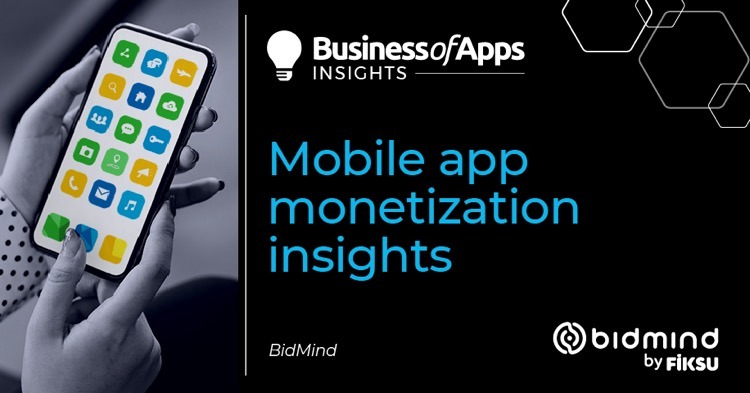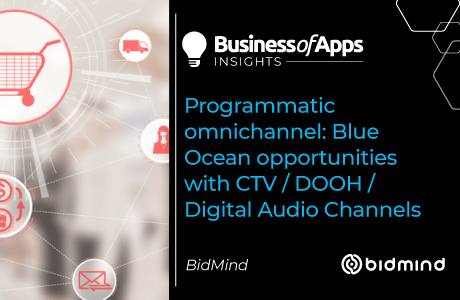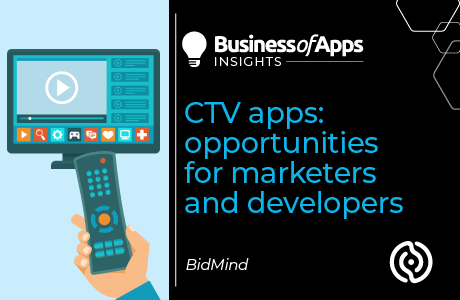It’s never a good business decision to just upload an app to marketplaces and expect it to blow up in the charts. Well, at least if you’re not a world-famous publisher of the likes of Google. The cost of development goes up as well as the quality standards and competition density, hence you can’t rely on sheer luck. Selecting a monetization model is one of the hardest decisions publishers have to make while being one of the most important ones too. Here you can find some personal opinions on the main ways to monetize smartphone apps and try to help figure out which one’s might suit your goals better.
Let’s roughly divide the models into three main categories: free app monetization, paid app monetization, and third-party solutions. Obviously, some of them intertwine and complement one another, there are also many instances when multiple strategies are used all at once. Nonetheless, let’s just stick to this scheme for convenience’s sake.
Free app monetization models
To begin with, let’s all agree that free apps were always and probably always will be significantly more popular than paid ones. This is evidenced by stats. As of October 2021, only 3% of Android Play Market apps were paid, according to Statista. For Apple’s AppStore, that number is somewhat higher, but the difference is negligible.
Free apps are more lucrative to an average user for one simple reason. It allows them to access the functionality and familiarize themselves with an app before paying for extra options if there are any. Publishers get even more benefits as free apps, on average, have a greater chance of being downloaded, users also tend to have a more lenient attitude towards free things. Free apps more easily form strong user bases that can bring revenue from both in-app purchases and ads. However, the free market is much more competitive, and it takes creativity and technical knowledge to come up with an effective approach.
It’s also worth keeping in mind that AppStore and Play Store take a significant cut of an app’s revenue (even though these conditions were facilitated for small publishers after the judicial proceedings between Epic Games and Apple). Apple’s marketplace collects 15% if an app earns less than $1 million annually, while Google’s store has the same 15% commission as long as total app earnings are less than $1 million. If more, then both will take 30% and in doing so they prohibit developers to redirect users to third-party billing systems.
In-app purchases are a great example and a powerful monetization tool. Through in-app payments, users can get additional features like extra in-game items, premium functionality in apps, or even offline services. In-store purchases work best with entertainment apps and games in particular, which is illustrated by revenue statistics from top-performing apps in both App Store and Play Market. Games account for 64.7% of all revenue generated in the third quarter of 2021. Most of them are monetized through in-app purchases.
The subscription-supported model (freemium) is another super popular free app monetization model. This format suggests free access to some of the app’s functionality with a paid option to unlock extra content. Under the freemium model, apps will be displayed in the free apps category which helps to build the initial user base with better chances of turning it into paying subscribers later on. This strategy is best suited for service-based applications like news aggregators, meditation apps, and streaming platforms. For users, acquiring content on a monthly basis with unlimited access is much more convenient than buying it separately as one transaction at a time. Additionally, small monthly payments are much less of a turn-off than big single purchases.
Ad monetization. Most developers include advertisement spots in their apps to monetize user traffic. The role of mediators between the developer (publisher) and the advertiser is executed by ad networks or technology vendors. The main benefit of in-app advertising compared to other monetization methods is that it’s free and hence much more attractive to new audiences. Ad display monetizes them all, not just a small portion of those who pay. Ads usually go along with freemium or in-app purchase models to drive additional income. But ads can also drive a stable amount of revenue on their own, given your app has loads of traffic.
Paid app monetization model
With all the appeal free app monetization models have, sometimes it’s better to just deliver a paid version of an app. This perfectly applies to apps that simply have no alternative on the market – solutions with unique or complicated highly specialized features, otherwise, it would be much harder to gain a wide user base. Apps for productivity and professional tools are the best categories for the paid app monetization model section.
Paid app monetization brings multiple benefits for publishers willing to take their chances with it. User loyalty and activity (people care less about free things), weaker competition in the paid section, transparent income from each install, and brand safety (no need to worry about unscrupulous ad display) are among the best parts of it.
Fire Up Your Growth!
Moburst propelled leading brands like Google, Reddit, and Uber to the next level. Let’s ignite your Success journey today!
Claim Your FREE Growth Fuel!Nonetheless, everything has to be paid for. Customers’ expectations are considerably increased from paid apps compared to freebies. Other than that, the disadvantages like fewer downloads, a limited target audience, and stiffness in adding additional monetization models turn most publishers away from this approach.
Third-party monetization models
Now, if your app reaches a certain level of popularity, it unlocks additional fascinating monetization avenues which some like to call third-party since they in some way fall into the free category and yet are something quite different.
For instance, in-app product placement. Say you have an app that is trendy in a particular consumer market segment. Companies serving this segment might be interested in promoting their products through that app and providing financial support for further development/promotion in return. It’s a good idea for every smartphone app developer to look into sponsorship avenues by addressing the needs of certain target audiences and brands potentially interested in acquiring those demographics.
Monetization through licensing. If your app collects user-generated data in some form, or its functionality allows the automatization of data accumulation (such as geo-location, IP addresses, or content preferences), it’s often a great idea to license other businesses to access that information. Through that, you can easily cover any app development expenditures including servers, salaries, and marketing. Ever thought about how Waze and Foursquare monetize their apps? Now you know. Waze provides location and traffic data for businesses to place ads, Foursquare sells their API to tech giants like Apple, Uber, Spotify, and other companies interested in improving their mapping. This choice would require user consent and strict security features unless you want legal trouble (especially in the NA and EU domains).
Have an outstanding idea that would make the world a better place but want no part of licensing and sponsorships? Then crowdfunding could be the way to go. Kickstarter, IndieGogo, and many others can help fund (and even monetize) your mobile app. Or you can take the route Wikipedia once chose – rely on donations. Since there’s no way to predict the potential revenue of this operation and it’s hard to build a stable income stream based on this, crowdfunding is only recommended for socially-oriented projects with no intention of earning heavy profits.
If all of that seems overly complicated, you can always consider selling the product. Yes, this method is the most radical for sure and has little to do with monetization in its core meaning, but sometimes it’s the best way to go. For instance, when you feel tired of a project, or believe someone else can make it better. Besides, the opportunity of acquiring outrageous profits in a single transaction can be just way too hard to resist… Remember Facebook (or should we call it Meta) buying Instagram for $1 billion in 2012? That’s how crazy it can get.
If you want to learn more about mobile app marketing or need assistance with your projects, feel free to reach us at reid@bidmind.com.











